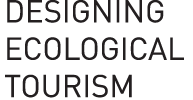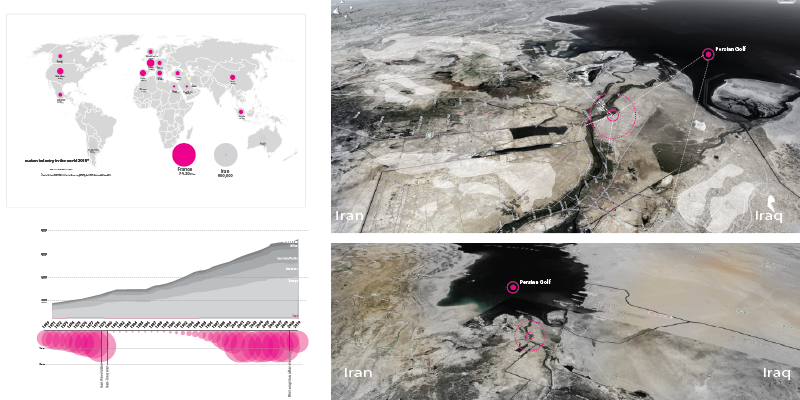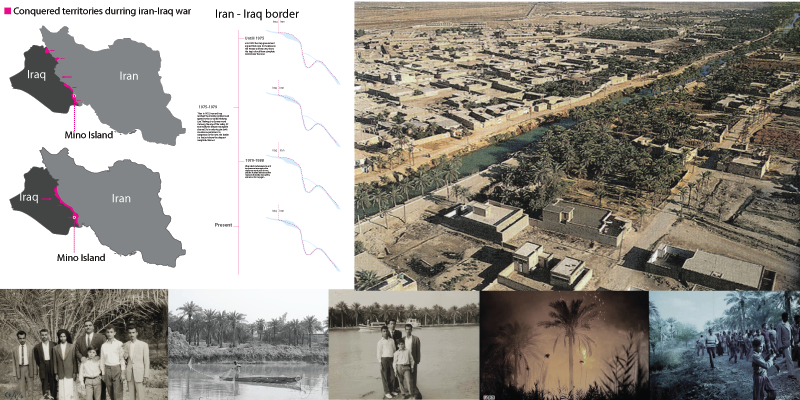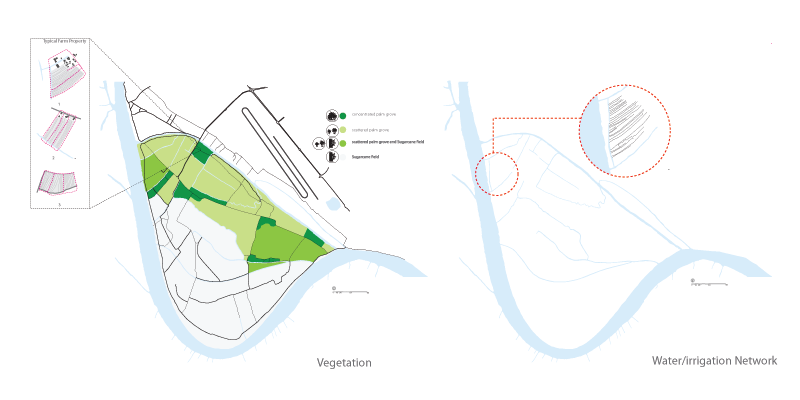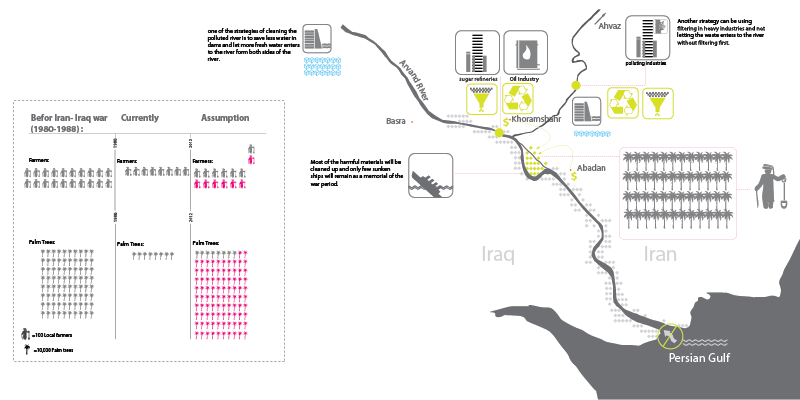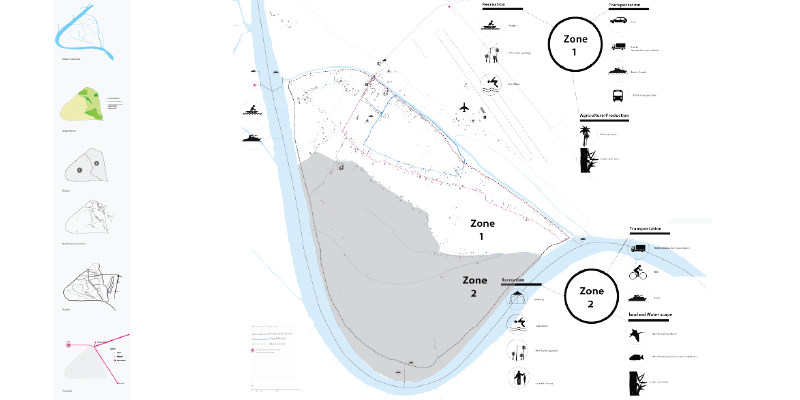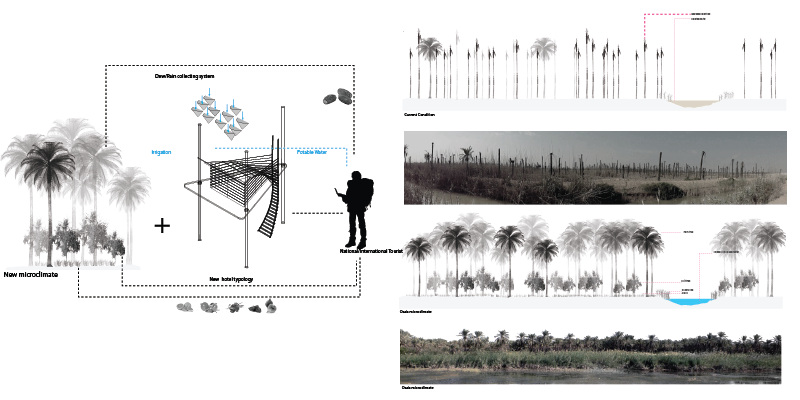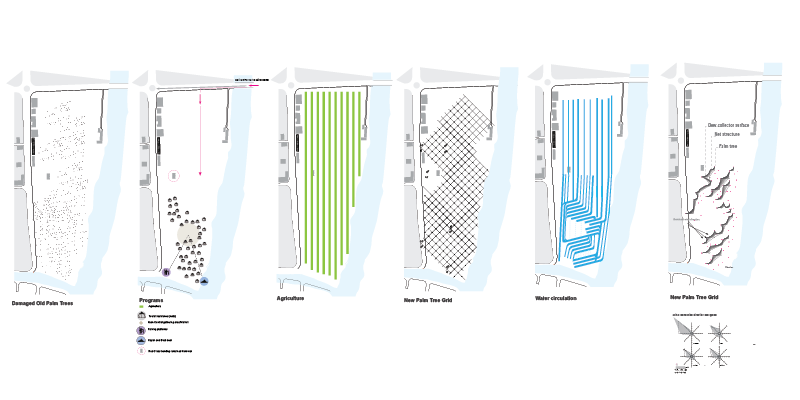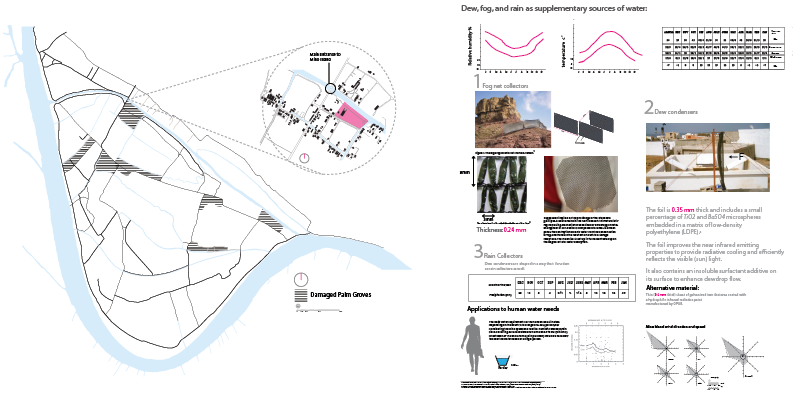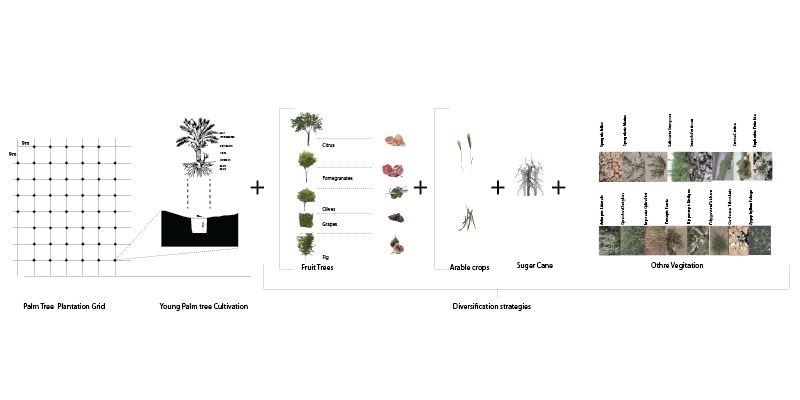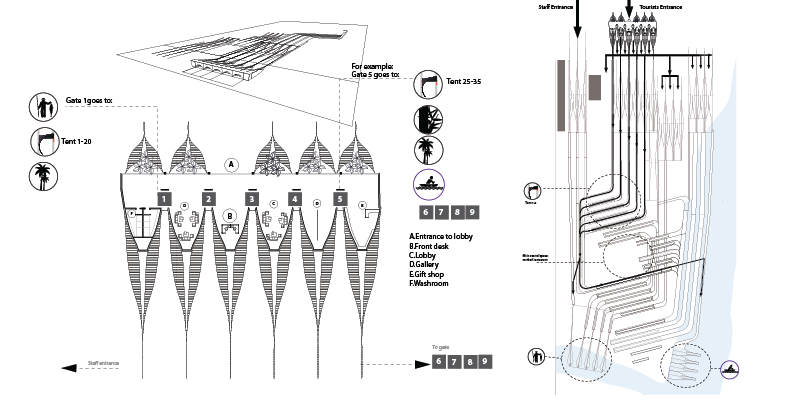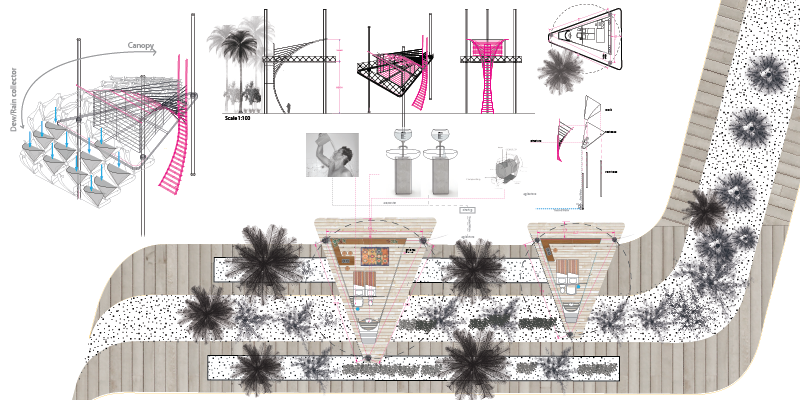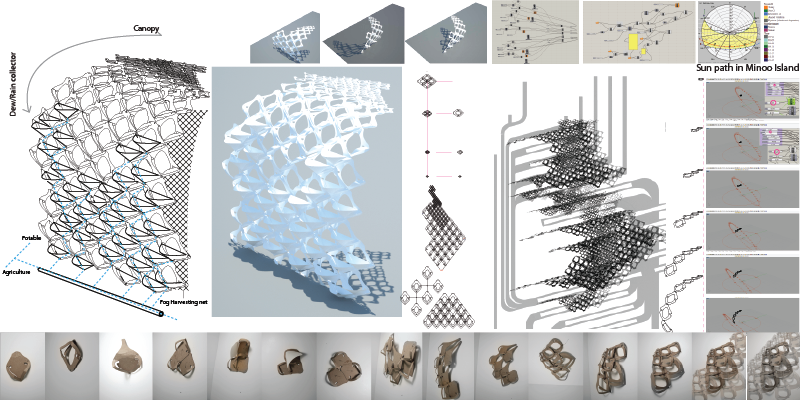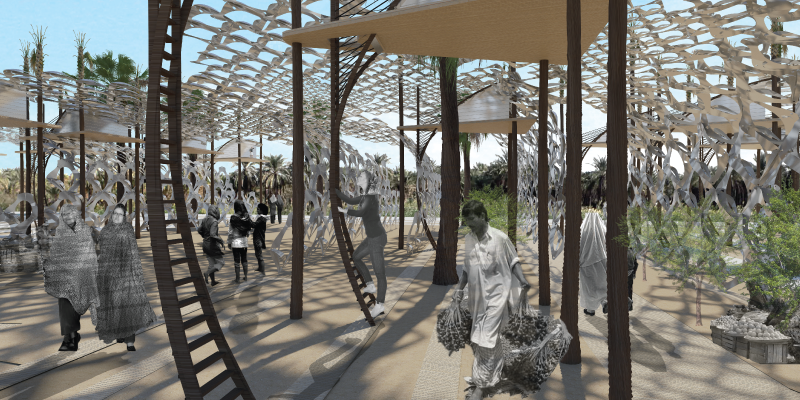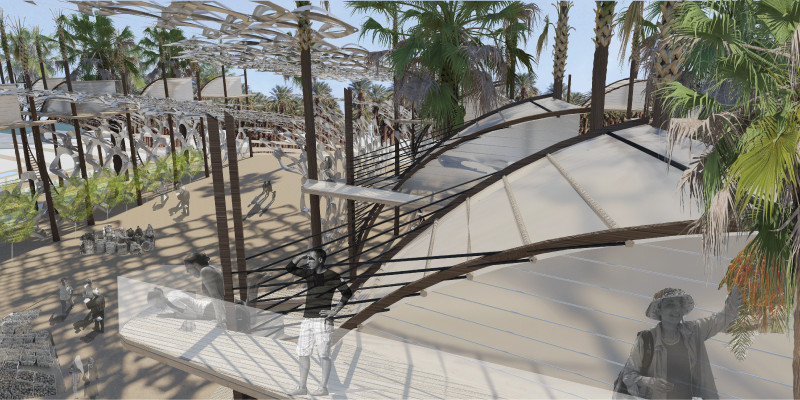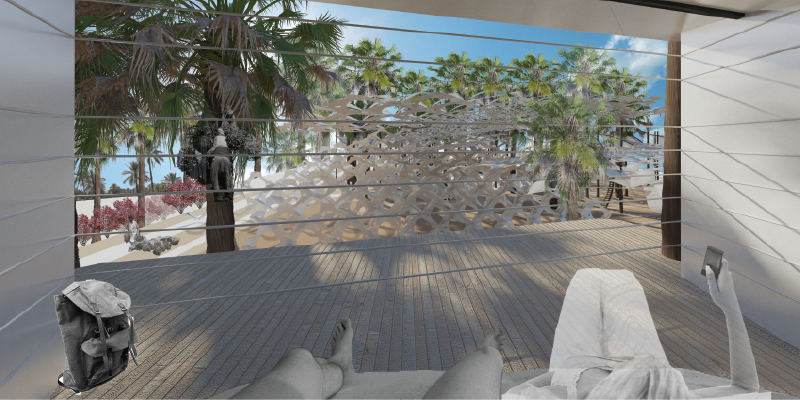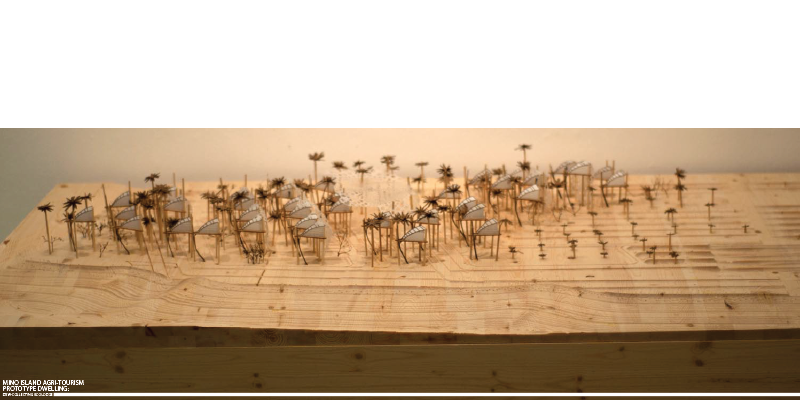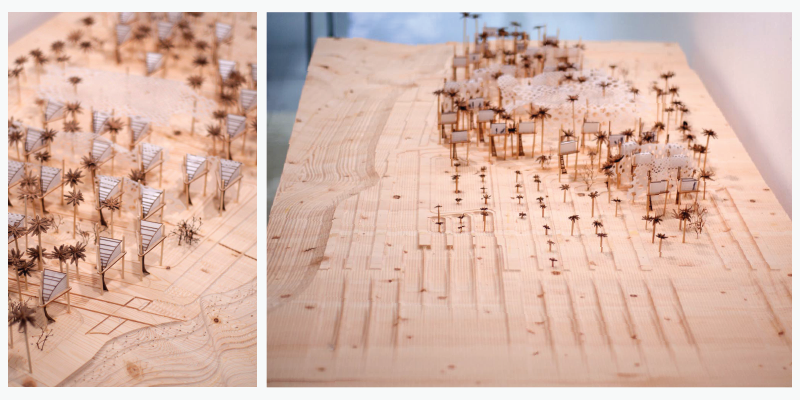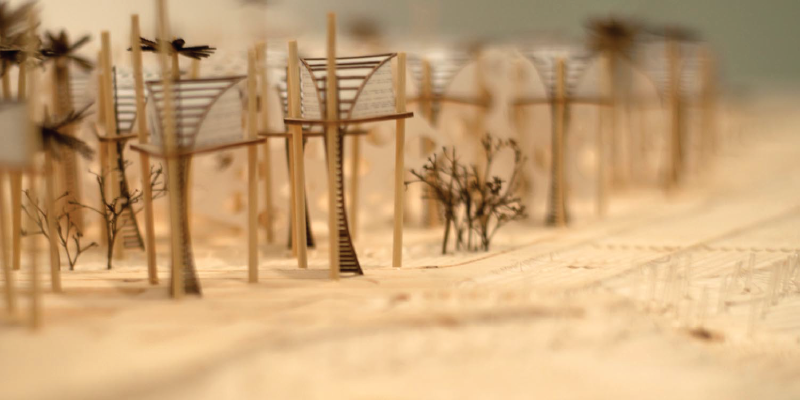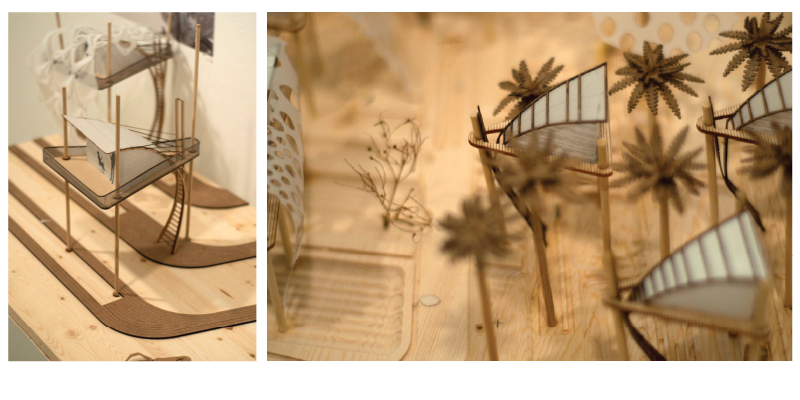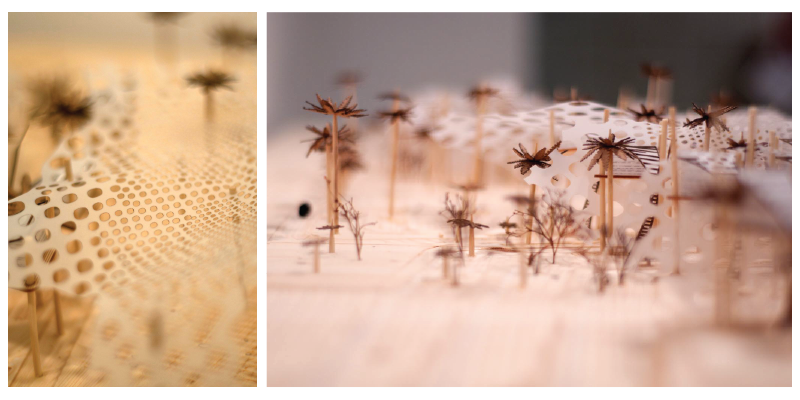Mino Island Agri-Tourism Project
by Hanna Tabatabaie
120205
Agri-tourism can be defined, most broadly, as the attraction of tourists to an agriculturally-based operation that usually involves farming or crop harvesting. There is often an overlap of agri-tourism with ecotourism.
MINO ISLAND AGRI-TOURISM is a master’s thesis project which seeks to generate a contemporary model of agri-tourism specifically for oasis settings in Iran. More than two-third of Iran considered as hot and dry region yet there is no sustainable ecotourism model for its arid landscape and thus the need for a prototype like this project is urgent. One of the central goals of this thesis is to develop a prototype of tourism which has low impact on its environment and that integrates agricultural production in its design.
Moreover, the lack of water is a major constraint in arid and semi-arid regions; this project also provides affordable, low-tech water harvesting design strategies to be implemented in oasian agricultural lands.
Iran has a great potential for tourism growth, since this economic is underdeveloped compared to other countries. For instance France, as the first tourist destination receives about 74.2 million tourists per year[1]. In comparison Iran only receives only 900,000 tourists per year which is relatively low due to Iran`s vast amount of natural resource.
Unfortunately political instabilities have a negative impact on Iran`s tourism industry. Besides, the oil base economy caused lack of investment in the tourism industry. Also it can be traced back to major times of war in Iran. One devastating event was the 8year Iran-Iraq war in 1980 which last for years.
This project seeks for a site with the potential to maximize national tourism and take advantage of Iran`s beautiful yet forgotten oasis landscapes. It is the intention that an increase in national tourism would create an appropriate infrastructure to host international interest in the future, when political context will change.
The site called Minoo Island which is located at the border of Iran and Iraq, as it could allow for potential international tourism growth in the future. Throughout the past centuries, Minoo Island has been a major tourist destination for the beauty of its gentle micro climate and its beautiful landscapes, which are composed of agricultural canals and oasian agricultural lands. During the Iran and Iraq war, part of the agricultural lands, which are mostly palm tree groves, were damaged, resulting in the transformation of the area from a celebrated tourist destination to a ghost town.
The land is located between two branches of Arvand River. From these branches, small man made channels penetrate towards the interior allowing for irrigation. The change of tide of the river fills the channels periodically with water. The vegetation of the island is mostly palm trees and sugar cane.
Iran is the second greatest exporter of dates in the world. However the productions of dates have been decreasing in recent years due to damming on both sides of the border, upstream from the river which limits the fresh water flow. This causes the Gulf water to infiltrate the river which increases the saline level in the water. This cycle damages the palm trees in the area. Moreover, industrial areas have polluted the water with their waste. Finally, there is still war debris that has been left on the river’s bed. Objects such as sunken ships still remain there.
For the purpose of this project, it is assumed that the waste from the industrial areas will filter before it enters the river. Also, there will be less water dammed upstream which will increase the water flow, reducing the Gulf water from entering the river. Moreover, the government supplies each farmer with 50 palm trees.
Master plan:
The role of the master plan is to develop a larger vision for the oasis in order to better protect it from overgrowth of tourism and control tourist activities. The site is divided into two zones; one is in fine condition in terms of vegetation and called the protected zone. Microclimates are created and cover the other zone which eventually becomes protected zone as well.
Accommodations:
Tourists will be able to stay in new hotel typologies which are located within the microclimates created. Tourists will be able to benefit from fresh fruit, beautiful surroundings and shelter in and arid area.
Water harvesting
Passive low-tech strategies will be used in order to filter and capture water in order to support the growth of vegetation as well as to supply potable water for tourists.
Dew condensers, fog collectors and rain collectors are three techniques which are used in this project. These elements designed in a way that function both as water harvesting system in vertical position and shading device based on Mino island sun path.
These collectors were designed parametrically using grasshopper software. The skin of the dew/ rain collectors was based on the sun path for the 2 most extreme sun angles: the summer equinox of June 21 and the winter equinox of December 22. The openings are smaller during times when the sun angle is high in order to minimize the amount of direct light entering the space.
Microclimate:
Healthy oasis microclimate requires 3 layers; the palm trees, fruit trees and crops
The site, located at the main entrance to Mino Island has an area of damaged palm trees. These trees are used as the structure for tree tends which is introduced as the new hotel typology. Moreover, in this site the three layer of a healthy Oasis microclimate considered in design of site plan.
In the end this border land, which was once deserted and left bare will be re-activated with both revived agriculture and a new economic sector agri-tourism. This project aims then to set a standard for a new form of tourism that not only regenerates damaged ecosystems but also proposes an architecture that is integrative with its environment’s climate and landscape.
